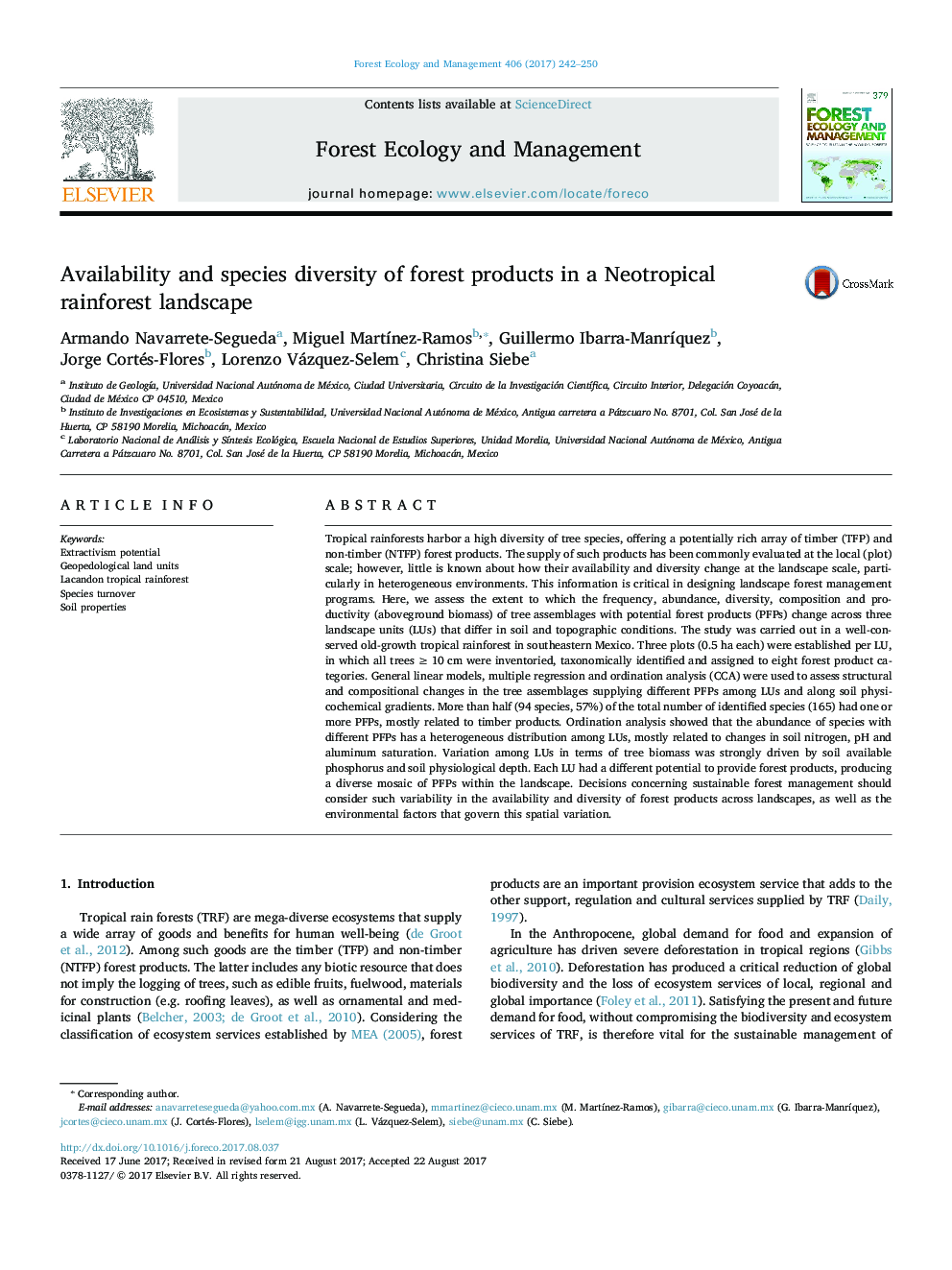| کد مقاله | کد نشریه | سال انتشار | مقاله انگلیسی | نسخه تمام متن |
|---|---|---|---|---|
| 6459009 | 1421352 | 2017 | 9 صفحه PDF | دانلود رایگان |
• Lacandon rainforest is rich in tree assemblages supplying potential forest products.
• Availability and diversity of tree forest products change across landscape.
• Spatial variation of forest products is affected by soil and topography.
• Heterogeneous landscapes supply a wide array of potential forest products.
• Landscape studies are a first step in designing sustainable use of forest products.
Tropical rainforests harbor a high diversity of tree species, offering a potentially rich array of timber (TFP) and non-timber (NTFP) forest products. The supply of such products has been commonly evaluated at the local (plot) scale; however, little is known about how their availability and diversity change at the landscape scale, particularly in heterogeneous environments. This information is critical in designing landscape forest management programs. Here, we assess the extent to which the frequency, abundance, diversity, composition and productivity (aboveground biomass) of tree assemblages with potential forest products (PFPs) change across three landscape units (LUs) that differ in soil and topographic conditions. The study was carried out in a well-conserved old-growth tropical rainforest in southeastern Mexico. Three plots (0.5 ha each) were established per LU, in which all trees ≥ 10 cm were inventoried, taxonomically identified and assigned to eight forest product categories. General linear models, multiple regression and ordination analysis (CCA) were used to assess structural and compositional changes in the tree assemblages supplying different PFPs among LUs and along soil physicochemical gradients. More than half (94 species, 57%) of the total number of identified species (165) had one or more PFPs, mostly related to timber products. Ordination analysis showed that the abundance of species with different PFPs has a heterogeneous distribution among LUs, mostly related to changes in soil nitrogen, pH and aluminum saturation. Variation among LUs in terms of tree biomass was strongly driven by soil available phosphorus and soil physiological depth. Each LU had a different potential to provide forest products, producing a diverse mosaic of PFPs within the landscape. Decisions concerning sustainable forest management should consider such variability in the availability and diversity of forest products across landscapes, as well as the environmental factors that govern this spatial variation.
Journal: Forest Ecology and Management - Volume 406, 15 December 2017, Pages 242–250
